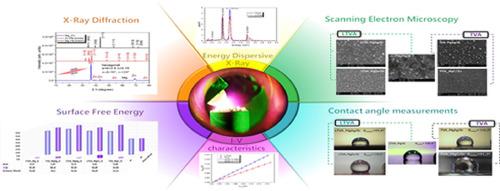当前位置:
X-MOL 学术
›
J. Magnes. Alloys
›
论文详情
Our official English website, www.x-mol.net, welcomes your
feedback! (Note: you will need to create a separate account there.)
Versatile techniques based on the Thermionic Vacuum Arc (TVA) and laser-induced TVA methods for Mg/Mg:X thin films deposition-A review
Journal of Magnesium and Alloys ( IF 15.8 ) Pub Date : 2024-08-26 , DOI: 10.1016/j.jma.2024.08.012 R. Vladoiu, A. Mandes, V. Dinca, M. Tichy, P. Kudrna, C.C. Ciobotaru, S. Polosan
Journal of Magnesium and Alloys ( IF 15.8 ) Pub Date : 2024-08-26 , DOI: 10.1016/j.jma.2024.08.012 R. Vladoiu, A. Mandes, V. Dinca, M. Tichy, P. Kudrna, C.C. Ciobotaru, S. Polosan

|
Magnesium and magnesium thin alloy films were deposited using a thermionic vacuum arc (TVA), which has multiple applications in the field of metallic electrodes for diodes and batteries or active corrosion protection. An improved laser-induced TVA (LTVA) method favors the crystallization processes of the deposited magnesium-based films because the interaction between laser and plasma discharge changes the thermal energy during photonic processes due to the local temperature variation. Plasma diagnosis based on current discharge measurements suggests an inelastic collision between the laser beam and the atoms from the plasma discharge. The morphology and surface properties of the obtained thin films differ between these two methods. While the amorphous character is dominant for TVA thin films, enabling a smooth surface, the LTVA method produces rough surfaces with prominent crystallinity, less hydrophobic character and lower surface energy. The smooth surfaces obtained by the TVA methods produce metallic electrodes with good electrical contact, ensuring better diodes and battery charge transport. Both methods allow uniform magnesium alloys to be obtained, but the laser used in the LTVA on the discharge plasma controls the added metal or element ratio.
中文翻译:

基于热离子真空电弧 (TVA) 和激光诱导 TVA 方法的 Mg/Mg:X 薄膜沉积的多功能技术 - 综述
使用热离子真空电弧(TVA)沉积镁和镁薄合金薄膜,该技术在二极管和电池的金属电极或主动腐蚀防护领域具有多种应用。改进的激光诱导 TVA (LTVA) 方法有利于沉积的镁基薄膜的结晶过程,因为激光和等离子体放电之间的相互作用会由于局部温度变化而改变光子过程中的热能。基于电流放电测量的等离子体诊断表明激光束与等离子体放电产生的原子之间存在非弹性碰撞。这两种方法所获得的薄膜的形貌和表面性质有所不同。虽然 TVA 薄膜的无定形特性占主导地位,可实现光滑的表面,但 LTVA 方法产生的粗糙表面具有显着的结晶度、较少的疏水特性和较低的表面能。 TVA 方法获得的光滑表面可产生具有良好电接触的金属电极,确保更好的二极管和电池电荷传输。两种方法都可以获得均匀的镁合金,但放电等离子体中 LTVA 中使用的激光控制添加的金属或元素比例。
更新日期:2024-08-26
中文翻译:

基于热离子真空电弧 (TVA) 和激光诱导 TVA 方法的 Mg/Mg:X 薄膜沉积的多功能技术 - 综述
使用热离子真空电弧(TVA)沉积镁和镁薄合金薄膜,该技术在二极管和电池的金属电极或主动腐蚀防护领域具有多种应用。改进的激光诱导 TVA (LTVA) 方法有利于沉积的镁基薄膜的结晶过程,因为激光和等离子体放电之间的相互作用会由于局部温度变化而改变光子过程中的热能。基于电流放电测量的等离子体诊断表明激光束与等离子体放电产生的原子之间存在非弹性碰撞。这两种方法所获得的薄膜的形貌和表面性质有所不同。虽然 TVA 薄膜的无定形特性占主导地位,可实现光滑的表面,但 LTVA 方法产生的粗糙表面具有显着的结晶度、较少的疏水特性和较低的表面能。 TVA 方法获得的光滑表面可产生具有良好电接触的金属电极,确保更好的二极管和电池电荷传输。两种方法都可以获得均匀的镁合金,但放电等离子体中 LTVA 中使用的激光控制添加的金属或元素比例。


















































 京公网安备 11010802027423号
京公网安备 11010802027423号